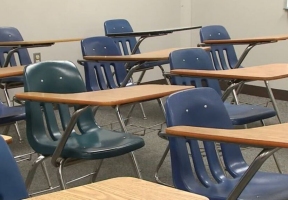By: Ashmar Mandou
 On Wednesday, Governor Pritzker unveiled an ambitious plan for school districts K-12 across Illinois. Approximately, $7 billion in federal funding will go to support students as they return to the classroom after distance and remote learning due to pandemic. Education experts were asked to share best practices and recommendations to best support students, “including academic and behavioral counseling; out-of-classroom experiences like high-value tutoring, after school programs and summer camps; and creating individualized student profiles to craft the best plans for all students.” The results are currently available online through the P-20 Council’s Learning Renewal Resource Guide. Recommendations are available online through the P-20 Council’s 180-page guide is filled with ideas from experts and stakeholders from across the state to help school districts renew learning and provide ongoing feedback.
On Wednesday, Governor Pritzker unveiled an ambitious plan for school districts K-12 across Illinois. Approximately, $7 billion in federal funding will go to support students as they return to the classroom after distance and remote learning due to pandemic. Education experts were asked to share best practices and recommendations to best support students, “including academic and behavioral counseling; out-of-classroom experiences like high-value tutoring, after school programs and summer camps; and creating individualized student profiles to craft the best plans for all students.” The results are currently available online through the P-20 Council’s Learning Renewal Resource Guide. Recommendations are available online through the P-20 Council’s 180-page guide is filled with ideas from experts and stakeholders from across the state to help school districts renew learning and provide ongoing feedback.
“If you’re a parent, I know you’ve spent most of this pandemic worried about how your kids are learning – with all the screens and Zooms, sometimes you’re worried about whether they’re learning at all,” said Governor JB Pritzker. “My administration is taking a little bit of that worry off your plates. I’m committed to making sure that Illinois leads the nation in assisting schools to make this new $7 billion count over the next several years to overcome the pandemic’s effects on our students, parents and educators.” The latest round of federal funding for schools, through the American Rescue Plan, allocates more than $5 billion for pre-K through 12th grade education in Illinois, 90 percent of which will flow directly to school districts. Illinois’ education system has been awarded more than $7.8 billion in federal pandemic relief funding in total over three rounds of the Elementary and Secondary School Emergency Relief Fund program, with $7 billion flowing directly to school districts over the next three years.
The Learning Renewal Resource Guide details 12 strategies – each supported by research, stakeholder feedback, and case studies – that districts and higher education institutions should consider to equitably address the pandemic’s short- and long-term impacts. Each of the 12 strategies contain underlying initiatives, implementation guidance, and estimated costs and impacts. Altogether, the guide serves as a tool to reinvigorate in-person learning opportunities for students through a reimagined school calendar and includes investments to identify and meet each student’s individual needs from preschool through college and career. “We have an unprecedented opportunity through this federal funding to transform the quality of learning opportunities for all our students,” said State Superintendent of Education Dr. Carmen I. Ayala. “This guide provides a roadmap for how our education system can emerge from the pandemic stronger, with even greater capacity to close gaps and achieve equity. That journey begins with getting students back into the classroom as soon and as much as possible.”









